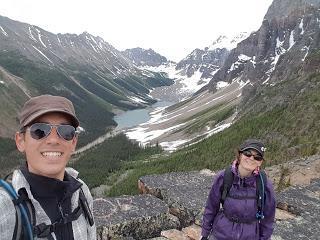
Nuestra zona del Banff National Park es Lake Louise, que es donde vivimos. Lake Louise es famoso por el Fairmont Chateau a orillas del Lake Louise y por las pistas de Ski Louise. Pero también tenemos algo muy especial en nuestro area. Si vais a una librería y miráis guías de viajes de Canadá, u os fijáis en algún especial de viajes o de excursiones del National Geographic, la foto de la portada es siempre del mismo lago de aguas turquesas con diez montañas nevadas rodeándolo. Este lago se llama Moraine Lake y está a 11 km de nuestra casa, de hecho es una de nuestras excursiones en bicicleta más repetidas.
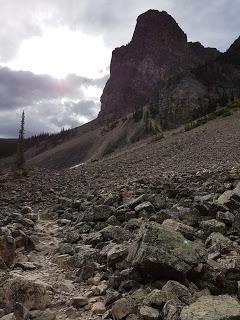
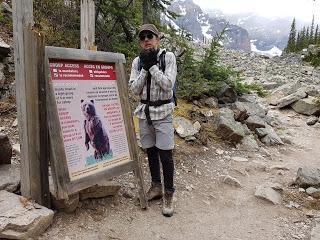
Desde que el turismo de masas descubrió que el lago de todas las postales, revistas y guías de Canadá estaba tan a mano, se ha transformado en lugar de peregrinación la práctica totalidad de grupos organizados de turistas. Así que, a menos que uno se acerque por ahí antes de la salida del sol, hay más gente que Las Ramblas.
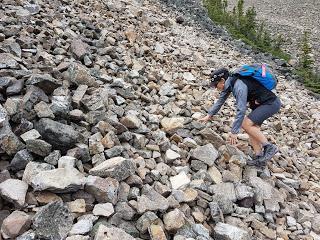
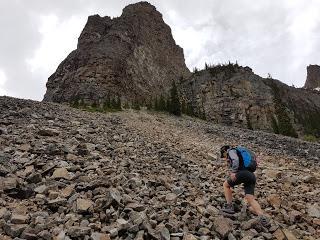
Pero claro, la gran mayoría de los turistas se acercan, encuentran el sitio desde el que se hace la foto de marras, hacen 10 GB de fotos y se largan. Así que lo que son las excursiones alrededor del lago son bastante tranquilas.
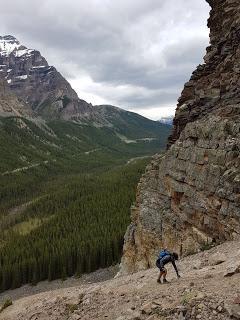
Hay un par de buenos recorridos relativamente llanos que no hemos hecho todavía y luego está la joya de la corona para los excursionistas de domingo como nosotros: la Torre de Babel.
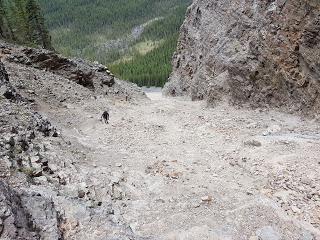
La Torre de Babel se alza al este del Moraine Lake y parece un termitero gigante. Es el típico pico que lo ves y piensas “las vistas deben ser bonitas desde ahí arriba pero a ver quién es el guapo que sube”. Bueno pues resulta que hay un modo de subir sin helicóptero.
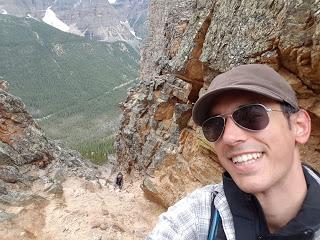
Nos acercamos hacia la base de la Torre, que resulta ser un pedregal gigantesco con rocas como sandías en un claro equilibrio inestable (la segunda derivada de la energía potencial es negativa) por las que hay que, literalmente, reptar. Cada movimiento de piernas y/o manos implica un mini alud de rocas; subir este primer tramo es el claro ejemplo de retroceder tres pasos para avanzar uno. Se requiere tener la cabeza muy dura, combinando tozudez con resistencia a los golpes pura y dura.
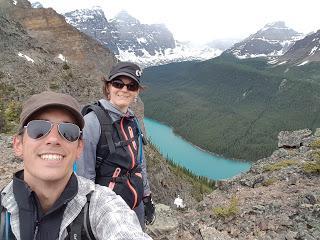
Una vez pasado el campo de minas llegamos a lo que sería una especia de desfiladero creado por la separación entre el termitero gigante (Tower of Babel) y el macizo montañoso principal. Es un poco parecido a la bajada por la que se tiran los ñus en la estampida que mata a Mufasa, pero más estrecho.
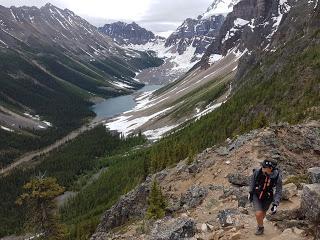
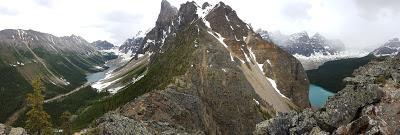
En este tramo ya no hay tanta roca grande, habiendo en su lugar un mar de guijarros sueltos que no facilitan el ascenso. Pero aquí hay truco: en el lado derecho según se sube la roca matriz de la montaña es firme y está lo suficientemente rota y resquebrajada como para poder ir agarrándose con uñas y, a veces, dientes. Este último tramo representa los dos últimos tercios del ascenso.Una vez finalizado el tramo del tobogán de piedras se llega a la zona llana de la cima de la montaña, por la que hay que caminar unos cinco minutos hasta su punto más elevado.
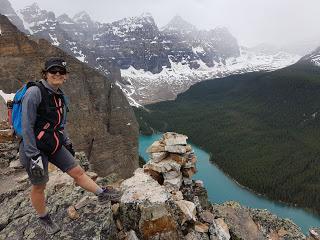
Desde allí se pueden ver los Consolation Lakes, parte del Moraine Lake, el valle de los 10 picos y el que lleva hasta Lake Louise.
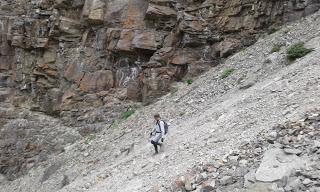
Las que fueron nuestras enemigas en la subida se convirtieron en nuestras aliadas en la bajada. Las piedras están tan sueltas y están formando una matriz tan densa que se puede bajar más o menos esquiando sobre ellas (con las botas). Por lo que, además de ser muy divertido, la bajada se realiza en algo menos que la mitad de tiempo que la subida.
Enrique & MarinaEnglish versionHIKING AROUND LAKE LOUISE: TOWER OF BABEL (2320 m)
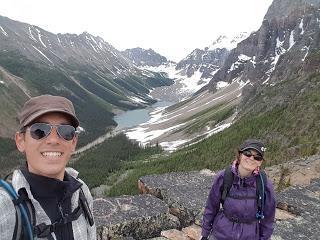
The area where we live within the Banff National Park is called Lake Louise. Lake Louise is famous because of the lake with that same name, the Fairmont Chateau on its shores and the Ski Louise resort. But the area counts with another (or many) super popular feature. If you pick any book or guide of the Rockies you’re always going to find a picture of a lake with and incredibly pale blue water surrounded by ten snow capped peaks. That’s Moraine Lake and it’s about 11 kms far from home on a tar sealed road. And yes, we sometimes go by bike.


Since the mass tourism found out about this beautiful place of the postcards, magazines and travel guides was so easy to reach, the place turned into a necessary visit for all the sight-ticking tourists. So as you can imagine, unless you get there before the sunrise, there’s more people there than at Calgary Stampede. Seriously.
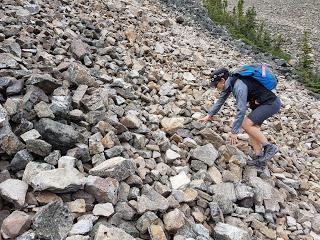
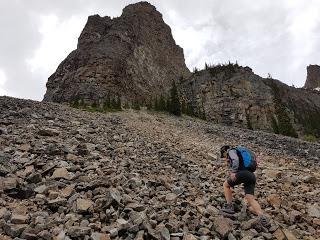
Most of these kind of visitors just get there, leave the car in the parking lot if they’re lucky, find the little lookout where you can take the classic picture, fill up 10 GB of data with images of the lake and surroundings and go. Then, all the trails that start at the shores of the lake are surprisingly not too busy.
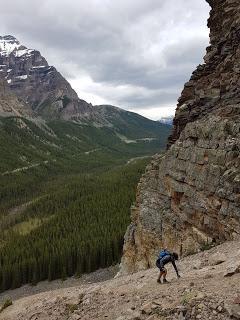
There’re a few good flat walks that we still haven’t done and there’s also a little gem for Sunday hikers like us called Tower of Babel.
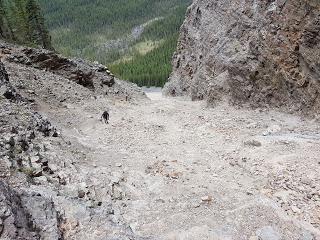
Towel of Babel stands east of Moraine Lake and resembles a gigantic termite nest. It’s the kind of peak that you look at and think “Oh my! the views must be so good from the top but how can you get there?”. Well, there’s a way to do it and the good news is that a helicopter isn’t required.
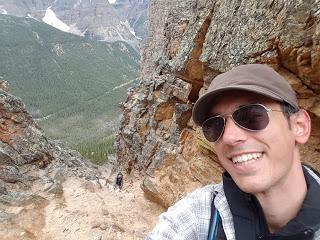
The track is lovely for 100 meters and that’s your approach. The rest is a succession of scrambles of some kind. For the first bit we walked on loose stones of the size of a watermelon placed very statically that we had to crawled on. Each step triggered a small avalanche of watermelon rocks and for each forward stride we went down two. I don’t even know how we made it through that super annoying section. I guess we’re more stubborn than the mountain.
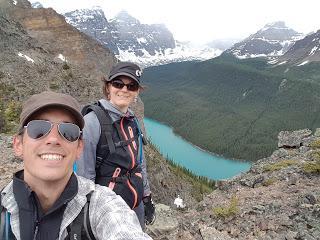
After the alpine watermelon field we reached a very narrow gully that links the oversize termite nest looking peak (Tower of Babel) with the main mountain range.
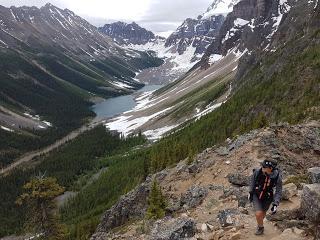
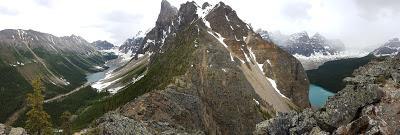
There, the rocks aren’t as big but ranging from chickpea to apple size and loose again, just in case you think it would be any easier now. Luckily, at the right hand side of the gully the matrix rock emerges and it’s grippy enough to provide with many edges to hold on with our hands and feet. The climb is like this for about its two last thirds. At the top of the gully you reach a narrow saddle and taking the left route you can reach the highest point of the peak in five minutes walking over lovely huge flat and static rocks.
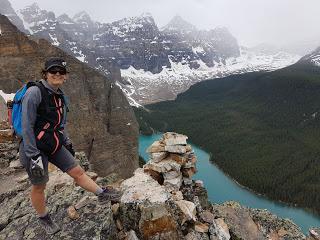
From the summit we could see Consolation Lakes, part of Moraine Lake, the Valley of the 10 Peaks and the valley that opens towards Lake Louise.
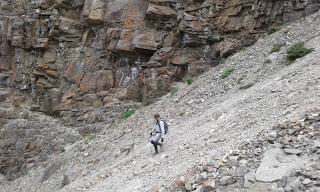
But the way down was super fun and took us about half the time to go up. Those loose rocks that we hated on the way up were awesome to slide on when getting back. They’re so loose that it feels like you’re skiing on them with just your boots. I brought my gaiters and I would recommend anyone to bring them too because you will have your feet into the rocks higher than ankle high. Enrique didn’t have them on and had enough stones in his shoes to finish the Sagrada Familia by the time we were back at the watermelon field. Enrique & Marina
